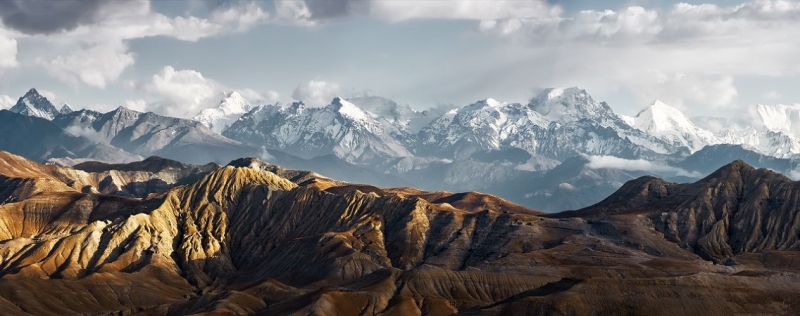
A cult destination for trekking and adventure enthusiasts, Nepal is the highest mountainous country in the world. Thousands of tourists come to the Himalayas to see eight-thousand-meter peaks surrounded by blooming rhododendrons, find the meaning of life in Buddhist monasteries, and paraglid over Lake Phewa. The country opened up to the world about 70 years ago, and in different parts you can still find authentic villages and a way of life that has remained unchanged since the Middle Ages. We tell you what to do and how to organize a trip to Nepal.
How to get there
There are no direct flights to the capital of Nepal from Russia. Emirates, FlyDubai and Qatar Airways fly to Kathmandu with connections in Dubai, Delhi or Doha. Round trip tickets cost from 62,000 rubles*, travel time is from 11 to 24 hours.
Entry rules
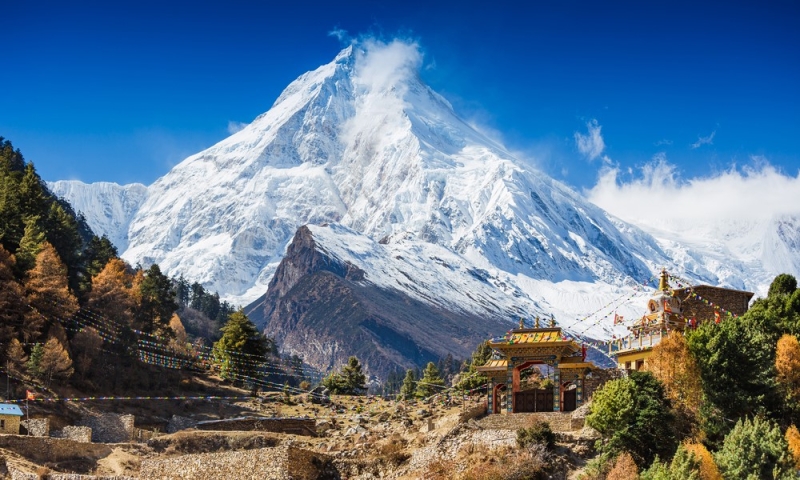
Russians to visit Nepal will need a foreign passport, a valid vaccination certificate against COVID-19 or a PCR test no older than 72 hours and a visa, which can be obtained at the airport upon arrival. To do this, you need to fill out a form in a special terminal and pay a fee.
The cost of a visa for 15 days is 30 US dollars (about 2,300 rubles*), for 30 days is 50 dollars (about 3,800 rubles*), for 90 days is 125 dollars (about 9,600 rubles*).
Currency
The national currency is the Nepalese rupee (NPR), 100 rupees are approximately equal to 60 rubles*. Cashless payment on the tracks is rare; it is safer to take dollars with you and exchange them for rupees. The colorful banknotes are interesting to look at – they depict mountains, stupas, yaks, tigers and rhododendron flowers.
How to move
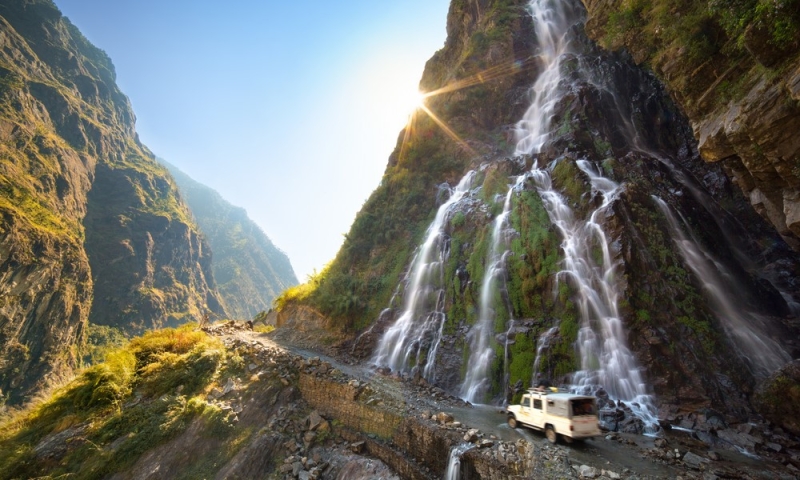
To travel around Kathmandu and Pokhara, use a taxi or rickshaw. It’s not worth renting a car: it’s very difficult to get used to the chaos on the roads and the local driving style. You can get to the start of the trek (for example, in Lukla) by plane of local airlines or by bus. Keep in mind that Nepal has slow traffic: roads outside major cities often leave much to be desired, so it will take a whole day to cover 200 km.
Kathmandu: city of temples, palaces and monkeys
Over more than two thousand years of history, hundreds of amazing temples, stupas and palaces have appeared in the Kathmandu Valley, which today attract tourists and pilgrims from all over the world. Seven sites in three ancient cities – Kathmandu, Patan and Bhaktapur – are included in the UNESCO World Heritage List. On the noisy and dusty streets of the Nepalese capital, Buddhist and Hindu temple complexes alternate, Tibetan monks in traditional orange and red robes (kashayas) and ascetics sadhus walk, colorful religious holidays and festivals take place.
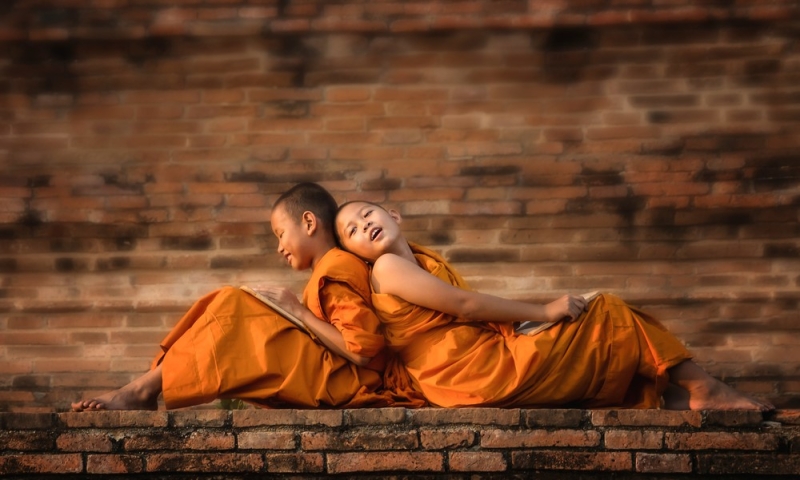
Start by heading to nearby Durbar Square, a 15-minute walk away. Located in the heart of old Kathmandu, it amazes with the architecture and intricate wooden carvings of five dozen temples, including those from the 16th–17th centuries. Admire the embossed Golden Gate, look into the premises of the royal palace of the Newar Malla dynasty, which ruled from the 13th to 18th centuries, and try to spot the goddess Kumari in the carved windows of the Kumari Ghar residence. It is believed that seeing her is a sign of great luck. The entrance ticket to the Durbar costs 1,000 rupees (about 580 rubles*).
Boudhanath Stupa in the northeastern region of Kathmandu is the center of Tibetan Buddhism. Centuries ago, the route of trade caravans from Tibet to India passed here. The white-domed stupa was erected in the 6th century; its diameter is 100 m, its height including the spire is 40 m, and its shape follows the mandala. Thousands of multi-colored lungta prayer flags are stretched from the spire to the base, a stream of people of different nationalities and religions slowly moves in a circle, performing kora – a ritual circumambulation of the stupa in a clockwise direction, accompanied by the recitation of mantras. 108 prayer wheels spin, incense is burned, and prayers are heard from the neighboring 40 Tibetan monasteries: many come to the stupa for peace and tranquility. The atmosphere of the place was well conveyed by director Bernardo Bertolucci in the film “Little Buddha”.
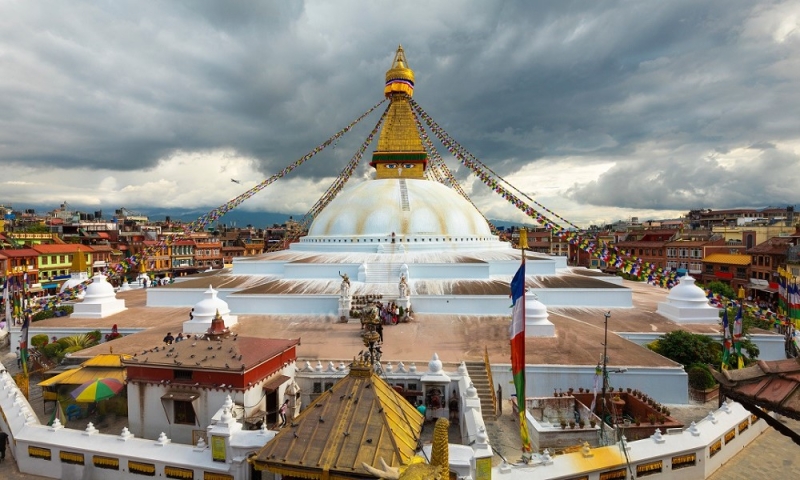
Tourists come here to explore the surrounding stupas and temples and then dine on the restaurant’s terrace overlooking the Boudhanath dome. Entrance to the territory – 400 rupees (about 230 rubles*).
Swayambhunath Stupa, which is called the Monkey Temple for the abundance of these animals, is considered the oldest in the valley – pilgrims visited this place 2,000 years ago. There are 365 steps leading up to it, and dozens of small stupas, statues of deities and mandalas are installed around it. Entrance to the complex is 200 rupees (about 120 rubles*).
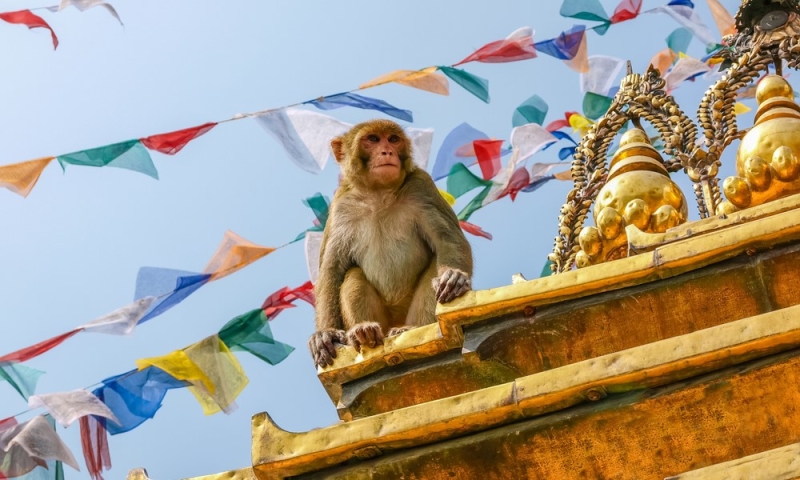
A completely different atmosphere in the Hindu temple complex of Pashupatinath on the banks of the Bagmati River. This is the Nepalese analogue of Varanasi on the banks of the sacred Ganges, dedicated to the god Shiva: funeral pyres burn on numerous platforms near the river (ghats). Ashes and ashes are thrown directly into the river. Hindus believe that death at Pashupatinath will allow them to be reborn as humans. We warn you: the sight and smell are not for the faint of heart. Entrance to the main temple is allowed only to followers of Hinduism; others can explore the secondary buildings and ghats. Entrance to the complex is 1,000 rupees (about 600 rubles*).
To unwind from sad thoughts, go to Thamel: visit souvenir and book shops, photograph colorful everyday scenes, buy cashmere or pashmina scarves, flags and mandalas, bracelets, figurines carved from wood or bone, coffee and products from yak wool Don’t forget to try different types of mo-mo (local dumplings) and try the iconic Nepali dish dal-bat, made from rice with vegetables, chicken and gravy.
Where to stay
- at the Aarya Chaitya Inn (rating 9) – from 1,800 rubles per night*.
- at the Hotel Little Buddha Inn (score 9) – from 2,200 rubles per night*.
- at the Thamel Eco Resort hotel (rating 8) – from 2,500 rubles per night*.
- at the Thamel Boutique Hotel (rating 9.9) – from 3,800 rubles per night*.
Pokhara: resort on the shores of Lake Phewa
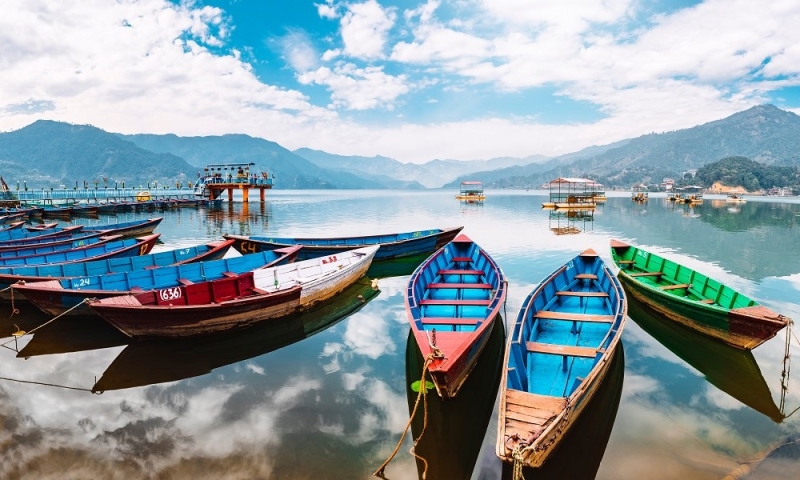
A city on the shore of Lake Fewa, where it’s nice to relax after a trek or live for a few weeks surrounded by mountains. In clear weather, Pokhara offers wonderful views of the Great Himalayan Range: you can see the snow-white peaks of the eight-thousander Annapurna, Dualagiri and Manaslu. The tourist area of Lakeside on the eastern shore is home to numerous hotels, cafes and restaurants, shops and paragliding agencies. Here you can rent a wooden boat and go to the opposite shore to visit the White Peace Stupa. The Buddhist temple stands on the top of the hill and the climb takes about 40 minutes. There is a real sense of tranquility around the walls of the stupa, and the views from the observation deck of the mountains and lake are some of the best in Pokhara, especially at sunset.
To see the rising sun bathe the mountain peaks in light, head to Sarangkot Hill, 10 km from the city, to watch the sunrise. This is the top launching area for paragliding. Dozens of companies offer tandem flights with an instructor: don’t miss the opportunity to admire the eight-thousanders, control the wing yourself and take stunning photographs. The cost of a half-hour flight is from 90–100 US dollars (about 7,000 rubles*).
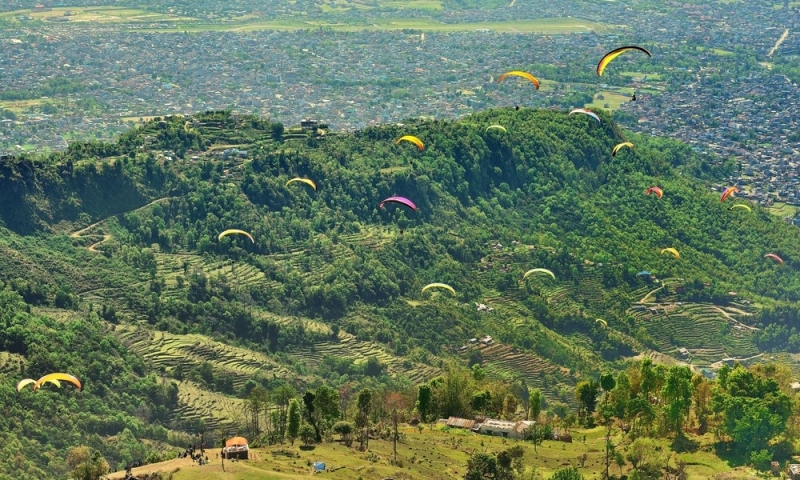
Another interesting point is the underground Devi waterfall and a cave with a temple dedicated to the god Shiva. When visiting, be careful: it is damp inside and there are snakes. There is a souvenir market nearby with a large selection. If you don’t find anything suitable, go for a promenade along the embankment and taste local cuisine.
Where to stay
- at the Hotel Immortal Inn (score 10) – from 1,200 rubles per night*.
- at the Tristar Hotel (rating 9.1) – from 2,400 rubles per night*.
- at the Hotel Chino Pokhara (rating 9.2) – from 3,000 rubles per night*.
- at the Waterfront Resort by KGH Group (rating 8.5) – from 8,300 rubles per night*.
Trekking in Nepal: the main thing
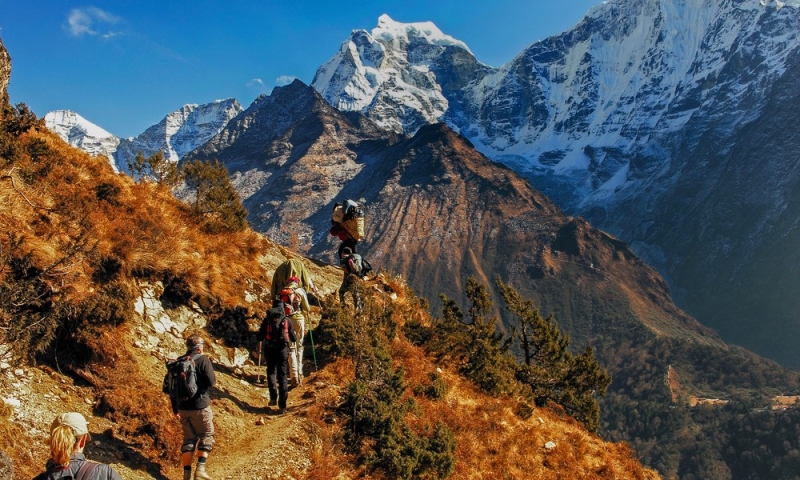
On the territory of Nepal there are 8 of the 14 eight-thousanders, including the highest peak on Earth – Everest, or Chomolungma. Thousands of tourists come every year to see it and dozens of other famous mountains, such as Annapurna, Manaslu, Cho Oyu and Ama Dablam. Nepal’s trekking routes are included in lists of the most beautiful in the world, and their duration varies from two-day lodge treks to three-month independent trips.
Trekking in the Himalayas is an opportunity to see snow-capped peaks and turquoise mountain lakes up close, wander along glaciers, experience the culture and customs of the Nepalese and photograph yaks in their habitats. You can climb a 5,000-meter peak or a pass at an altitude of 5,500 m during the day, and spend the evening in a cozy dining room tasting dal bata, casual conversation and tea with apple pie. This is an adventure you will never forget.
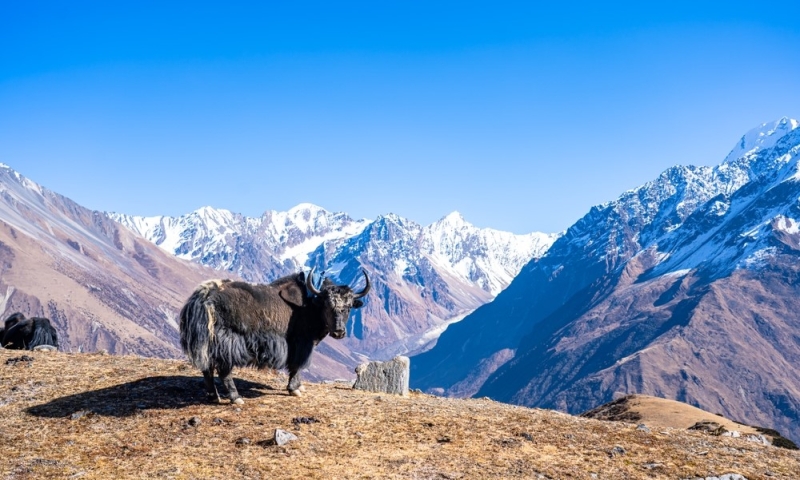
On popular lodge tracks, there is no need to take a tent and carry food with you: tourists go from one village to another, spending the night and eating in hotels called lodges or guest houses. A circular route around Annapurna with a visit to the high-altitude Lake Tilicho and overcoming the Thorung La Pass at a height of 5,416 m will take approximately three weeks, a walk along the Langtang valley with an ascent to Tsergo Ri (5,050 m) or Kyanjin Ri (4,773 m) and a visit to The sacred lakes of Gosaikunda will last for two weeks. During the same time, you can manage to climb Kala Patar (5,645 m) and admire Everest. If you only have a few days to spare, head from Pokhara to Poon Hill (3,210m) to watch the sunrise surrounded by Annapurna, Dhaulagiri, Machapuchare and other stunningly beautiful peaks.
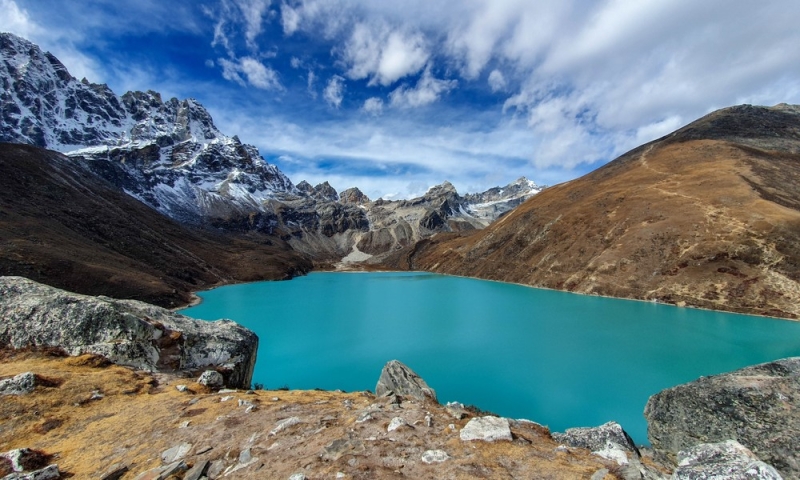
Before going out on the track, you need to obtain a permit; depending on the region, a tracker card (TIMS) is added, their cost is approximately 2,000-3,000 rupees (1,170-1,750 rubles*). If the route passes through the territory of a national park, you will be asked to pay an entrance fee, which is another 3,000 rupees (1,750 rubles*). To obtain a permit you will need a copy of your passport and two photographs.
From April 1, 2023, the Nepal Tourism Board has banned foreigners from trekking without a guide. It is not yet clear whether the rule applies to all tourists or only to individual travelers. According to The Kathmandu Port, no changes are planned in the Everest area; solo treks without a guide are allowed in the coming season. If the ban in other regions is confirmed, tourists will have to additionally pay for the services of a licensed local guide – from 27-30 US dollars per day (about 2,050 – 2,300 rubles*).
It is more reliable to hire a guide and porter (a porter who will carry a heavy backpack) from government travel agencies, rather than on the street near the hotel. The agency must be registered with the Department of Tourism and the Nepal Trekking Agencies Association.
Useful tips
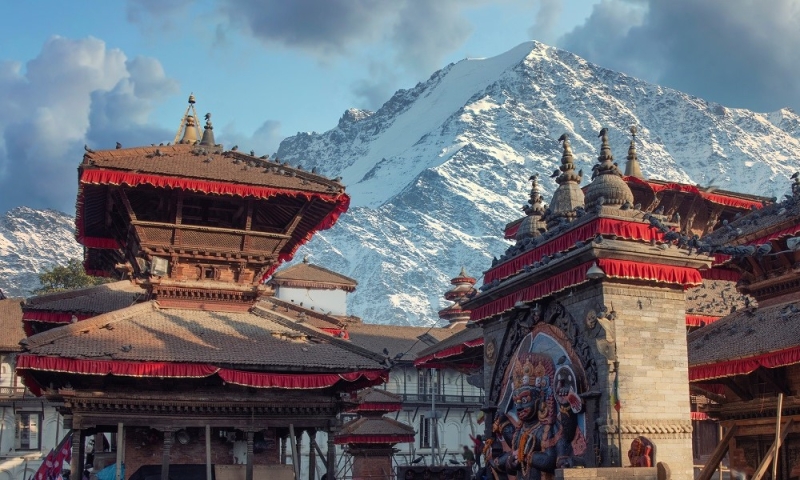
- When purchasing insurance, choose the option with the possibility of helicopter evacuation: there are no roads to high mountain villages.
- Remember about altitude sickness and follow acclimatization tactics: do not gain more than 800 m of altitude in a day. Ascents of 400–600 m will help you get used to new conditions.
- Drink only bottled or boiled water.
- Bring a first aid kit and sunscreen with you.
- You can buy the necessary equipment and clothing or rent it at low prices in Thamel in Kathmandu or at Lakeside in Pokhara.
- Take a power bank or solar battery and be prepared to pay for charging your gadgets: the cost starts from 200 rupees (115 rubles*) and increases in proportion to the height.
- Remember: the higher you go, the more expensive all services, equipment and food are.
- On the track it is customary to say hello to people you meet. The traditional greeting is “Namaste” (literally “bow to you”).
*Prices are current at the time of publication.

